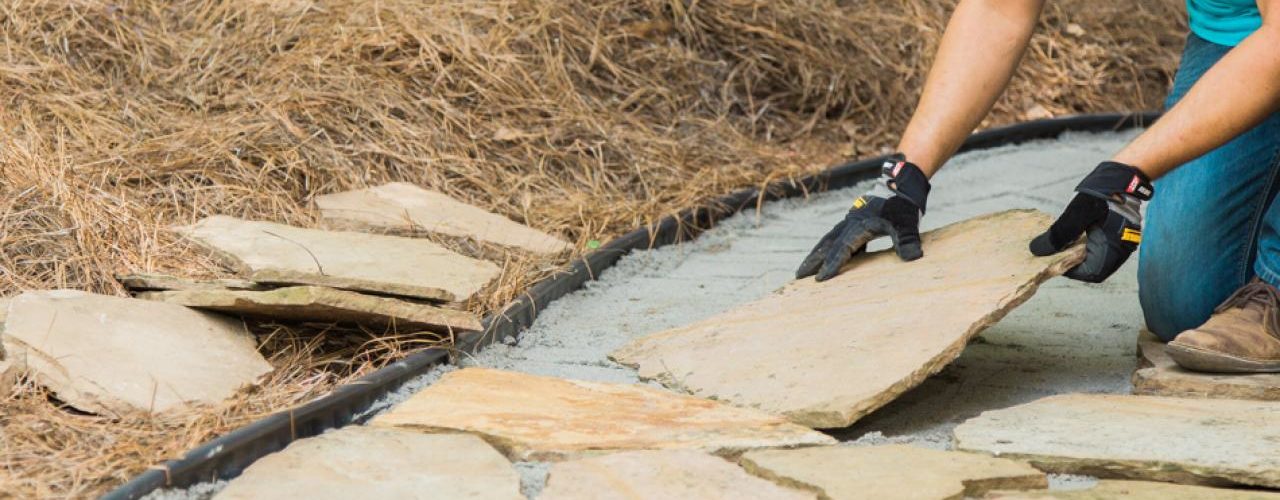Before you even begin this project, you need to assess one basic thing: Is the walkway already paved? If so, you’ll need to rip out the paving. If this is concrete, which can be a trickier task than simply digging up pavers, you can find additional help at DIY: How To Remove Concrete Sidewalk.
Now that your working space is clear of any previous construction, it’s time to lay our flagstone walkway.
First, you’ll need to determine the space you want to cover. This will involve remembering your 10th grade geometry lessons about finding surface area, but it’s better to measure accurately than fall short (or over purchase) your flagstones! Measure the length and width you want to pave, then multiply them. This is your surface area. Use the same principle in calculating up the total area your flagstones will cover. Its better to purchase a little more than you need, rather than a little less, so don’t’ be afraid to buy a couple of extra flagstones. They’re always good to have on hand if a tree should tumble onto your lovely walkway and crack one of the pavers. You’ll also need to purchase enough gravel to cover the space you’ve selected to a depth of 3 inches.
Use marking paint to spray an outline of your walkway. You’ll then need to dig this area up, down to a depth of 6 inches. Use a landscaping rake to even out the surface and a hand or power tamper to further level it. Add a one inch layer of gravel, using the tamper to tamp it down. Repeat this twice more to form a 3 inch layer of compacted gravel for your walkway’s base.
Start with the stones closest to the house (or other structure) and work outwards. Seat each stone in the gravel by either standing on it and jumping up down or, if you want to be more professional, hitting it with a rubber mallet. Make sure the stone is securely set before moving on to the next stone. As you place and seat the stones, keep them approximately 4 inches apart, and use a level to ensure that you keep a slight pitch away from the structure. This will prevent rainwater from running down the flagstones and into the building.
If you find that you need to reshape stones (a likely prospect if you’ve purchased individual flagstones rather than a pallet), you’ll need to do so very carefully. Hacking away with a chisel will not get the job done. Instead, pretend that you’re a sculptor. Mark the area to be chiseled with a pencil. Then, using a hammer and chisel, chisel the stone off in small (no more than two inch wide) sections. Chiseling larger sections could cause the stone to crack. And remember that, by their nature, flagstone walkways are not suppose to be uniform. If two stones don’t line up exactly, that’s okay.
Once you’ve finished seating your flagstones, you’ll need to fill in the joints—those four inch gaps you left. Your options for filler are varied. Pea gravel and crushed limestone are good options for stone, while sand is durable and will add a color enhancement to the stone. Filling the joists with topsoil and letting grass grow between the flagstones is a very popular option. Overtime, this will create a walkway with a well-used, cozy feel.
More detailed directions can be found at DIY Network: How To Lay a Flagstone Patio.
Related Youtube Videos:
Flagstone Walkway Part One
Flagstone Walkway Part Two



